Note: The images, text, and other materials in this article are compiled from various online sources and books for the purpose of facilitating learning and communication. They are not to be used for commercial activities. If there are any copyright infringements, please contact the author.
 ✍Definition
✍Definition
An automotive tire pressure sensor is a device installed on a vehicle’s tires to monitor parameters such as tire pressure and temperature. It uses built-in pressure-sensitive elements and temperature sensors to detect real-time changes in tire pressure and temperature, transmitting this data wirelessly to the vehicle’s dashboard or other receiving devices, allowing the driver to be informed of tire conditions in a timely manner to ensure driving safety.
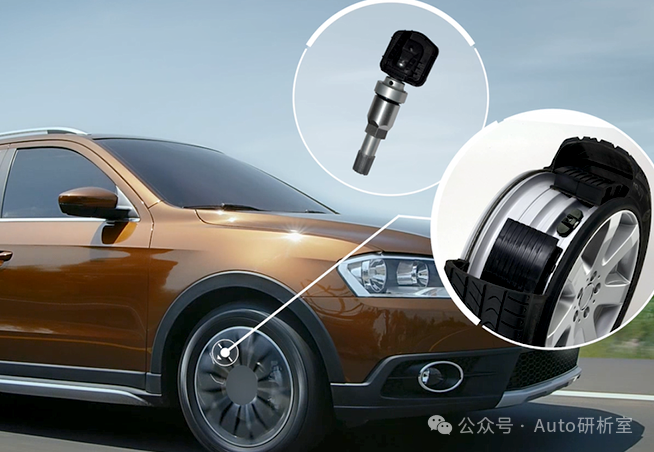
✍Components
The automotive tire pressure sensor mainly consists of the following parts:
Sensitive elements: These include pressure-sensitive elements and temperature-sensitive elements, which are used to sense changes in tire pressure and temperature. For example, piezoresistive pressure-sensitive elements can convert pressure changes into changes in resistance, while thermistors can convert temperature changes into changes in resistance.
Signal processing circuit: Responsible for amplifying, filtering, and converting the electrical signals output by the sensitive elements into digital signals that can be recognized by the microcontroller.
Microcontroller (MCU): The core of the tire pressure sensor, it performs calculations, analysis, and processing on the digital signals output by the signal processing circuit, encoding the data according to a predetermined program for transmission.
Wireless RF module: Sends the encoded data from the microcontroller as a wireless radio frequency signal, typically consisting of an RF transmitter and an antenna, with common operating frequencies of 315MHz or 433MHz.
Power supply: Provides operating voltage to all components of the tire pressure sensor, usually using a button cell battery, which is small in size, has high energy density, and long service life, meeting the long-term operational needs of the tire pressure sensor.
The above describes the basic structural components of automotive tire pressure sensors, which may vary in specific structure and component selection among different brands and models.
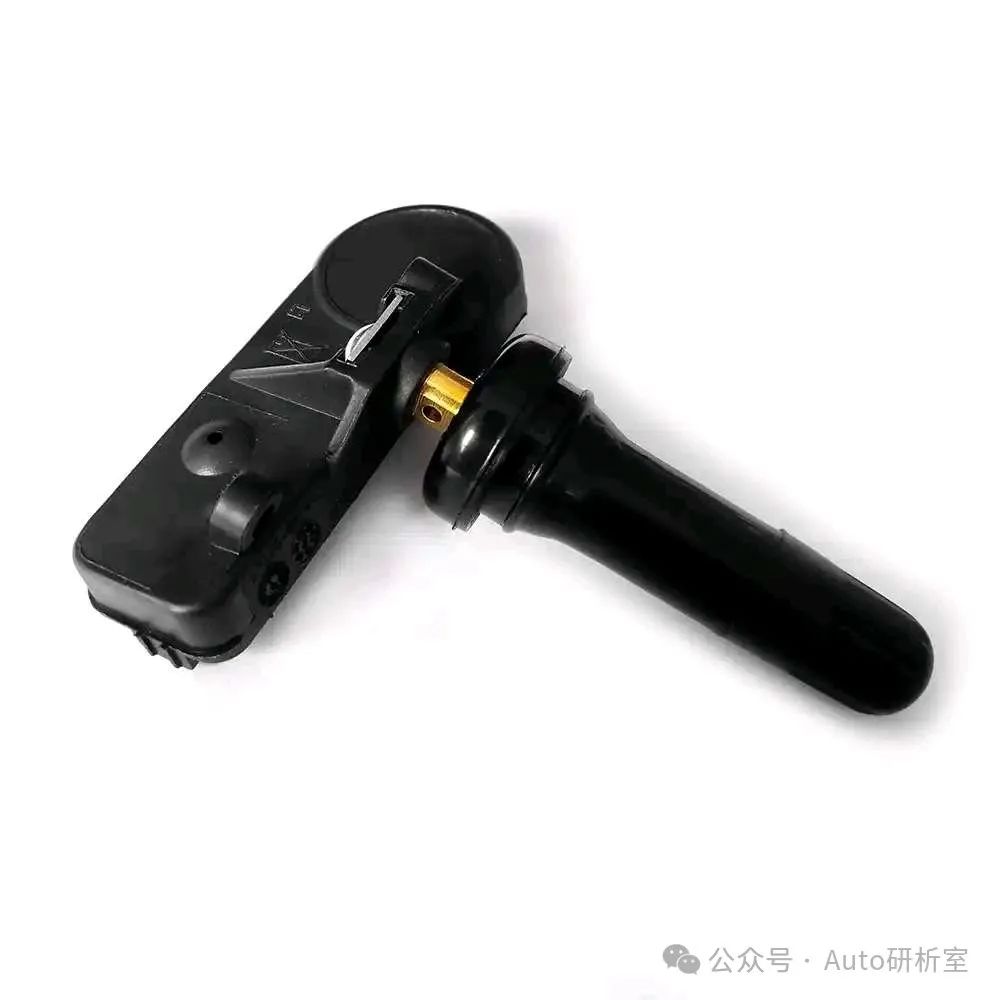
✍Principle/Function
The working principle of automotive tire pressure sensors is as follows:
Pressure measurement principle: Typically uses piezoresistive or capacitive sensors. Piezoresistive sensors utilize the piezoresistive effect of semiconductor materials; when tire pressure changes, the pressure-sensitive element inside the sensor deforms, causing its resistance value to change. By measuring the change in resistance value, tire pressure can be reflected. Capacitive sensors detect tire pressure based on changes in the distance or area between capacitor plates, which leads to changes in capacitance.
Temperature measurement principle: Generally uses thermistors as temperature-sensitive elements. The resistance of thermistors changes significantly with temperature variations; when the tire temperature increases or decreases, the resistance of the thermistor changes accordingly, allowing the internal tire temperature to be determined by measuring its resistance.
Signal transmission principle: The tire pressure sensor encodes the measured pressure and temperature data and then transmits the signal wirelessly using radio frequency technology. Common operating frequencies include 315MHz and 433MHz, with the vehicle’s receiving module receiving the signal and transmitting it to the vehicle’s electronic control unit (ECU) for processing and display, allowing the driver to understand the real-time status of the tires.
✍Manufacturing Process
The manufacturing process of automotive tire pressure sensors mainly includes the following steps:
1. Chip manufacturing: Using semiconductor manufacturing processes, pressure-sensitive chips and temperature-sensitive chips are produced on silicon wafers through a series of complex procedures such as photolithography, etching, and doping, enabling them to sense pressure and temperature changes and convert them into electrical signals.
2. Packaging process: Connects the manufactured chips with pin frames and other components, using materials such as plastic or ceramics for packaging to protect the chips from external environmental influences, such as mechanical shocks, moisture, and chemical corrosion, while ensuring reliable electrical connections with external circuits.
3. Circuit assembly: The packaged chips are soldered onto printed circuit boards (PCBs) along with other electronic components, such as resistors, capacitors, microcontrollers, and wireless RF modules, using surface mount technology (SMT) or through-hole technology, forming a complete tire pressure sensor circuit.
4. Antenna manufacturing and integration: The antenna for the wireless RF module can be made on the PCB using etching or printing processes, or a separate metal antenna can be integrated with the circuit board through soldering or connectors to ensure effective transmission and reception of wireless signals.
5. Power assembly: For battery-powered tire pressure sensors, a button cell battery needs to be installed in a specific battery compartment and electrically connected to the circuit through soldering or connectors to ensure stable power supply to the sensor.
6. Overall packaging: The assembled circuit board and other components are placed in a shell with good sealing and mechanical strength, and packaged using potting, injection molding, or sealing glue to further enhance the sensor’s waterproof, dustproof, and impact-resistant performance.
7. Testing and calibration: Comprehensive testing of the manufactured tire pressure sensors is conducted, including pressure and temperature measurement accuracy tests, wireless signal transmission performance tests, etc., and calibration is performed based on the test results to ensure that all performance indicators meet design requirements.
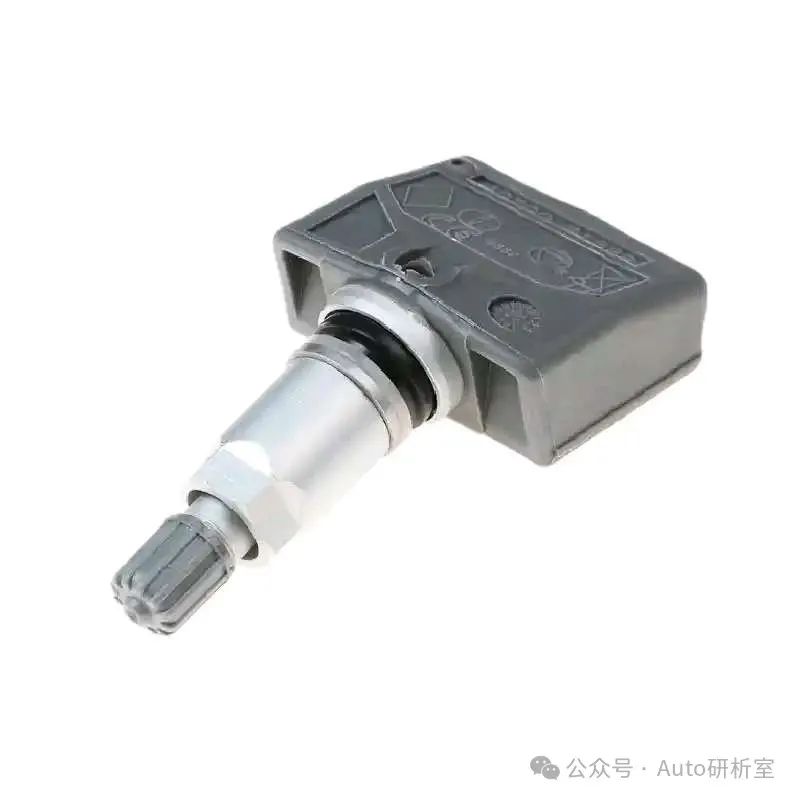
✍Materials
The materials used in automotive tire pressure sensors must meet various performance requirements, as follows:
Materials for sensitive elements: Pressure-sensitive elements commonly use silicon materials, leveraging their piezoresistive effect to accurately sense pressure changes, characterized by high precision and sensitivity. Temperature-sensitive elements generally use thermistor materials, such as metal oxide semiconductor materials, which can quickly and accurately convert temperature changes into resistance value changes.
Materials for circuit boards: Typically use printed circuit board (PCB) materials, such as FR-4 epoxy resin glass fiber boards, which have good electrical insulation properties, mechanical strength, and processing capabilities, ensuring the stability and reliability of the circuit.
Packaging materials: The shell packaging materials generally use engineering plastics, such as polycarbonate (PC) and nylon (PA), which have good mechanical strength, impact resistance, weather resistance, and waterproof performance, effectively protecting internal components. Potting materials commonly use silicone rubber or epoxy resin, which have good insulation, sealing, and temperature resistance, further enhancing the protective performance of the sensor.
Antenna materials: Generally use metals such as copper or aluminum, which have good conductivity and electromagnetic wave radiation performance, ensuring effective transmission and reception of wireless signals.
Battery materials: Common button battery materials include lithium manganese oxide, which has high energy density, long service life, and good high and low-temperature performance, meeting the long-term stable operational needs of tire pressure sensors.
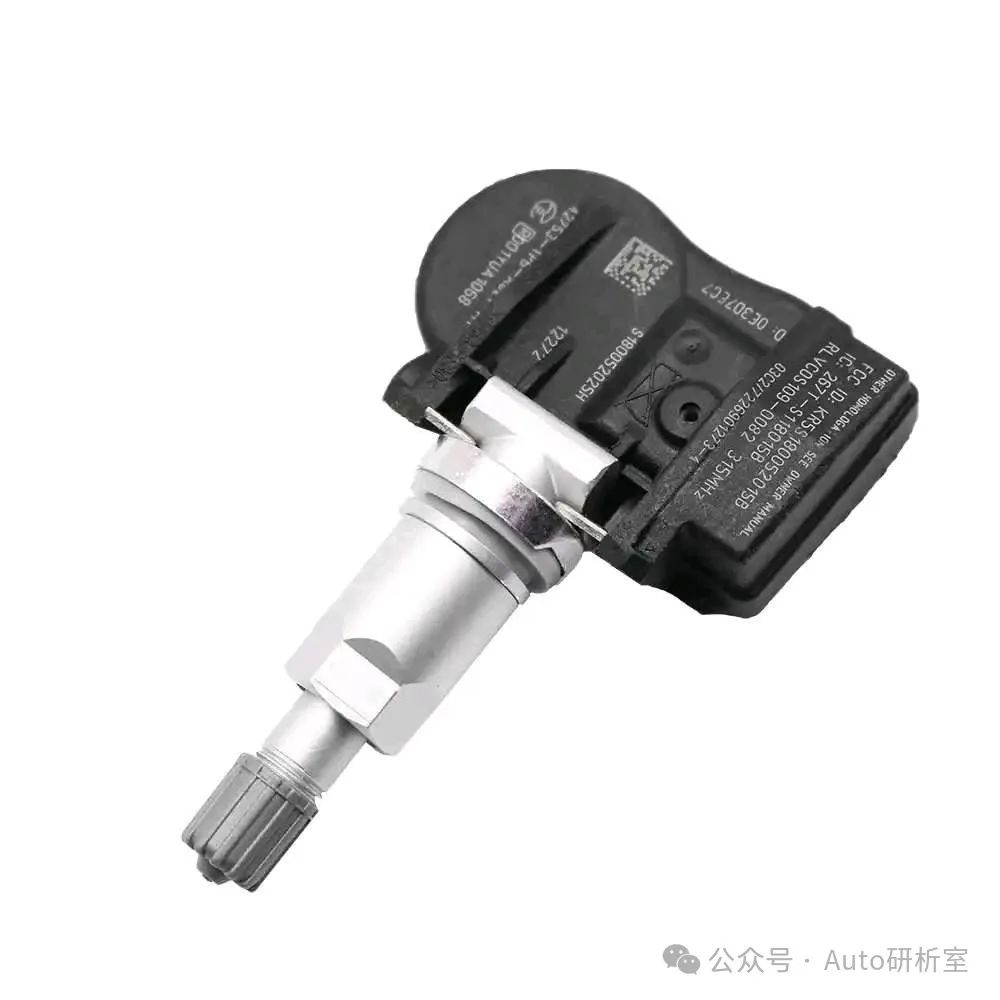
✍Performance
The performance requirements for automotive tire pressure sensors are as follows:
High precision measurement: Must accurately measure tire pressure, generally requiring a measurement error of no more than ±0.1 bar within the normal operating range; for temperature measurement, the error is usually required to be within ±2℃ to accurately reflect the actual condition of the tires.
Wide operating temperature range: Must be able to operate stably within a temperature range of -40℃ to 125℃, adapting to environmental temperature changes in different regions and seasons, ensuring measurement accuracy and reliability of signal transmission.
High reliability: During vehicle operation, it must withstand mechanical stresses such as vibrations and shocks, able to endure acceleration shocks of at least 50g without damage, and maintain stable performance in long-term vibration environments. Additionally, it should have good waterproof and dustproof capabilities, generally requiring an IP67 or higher protection level.
Long service life: Since tire pressure sensors are installed inside tires and are inconvenient to replace, the service life of battery-powered sensors is generally required to reach 5 to 10 years to reduce maintenance costs and frequency.
Fast response: When tire pressure or temperature changes, the sensor should respond within a short time, generally requiring a pressure change response time of no more than 60 seconds and a temperature change response time of no more than 120 seconds, allowing the driver to obtain tire status information in a timely manner.
Strong anti-interference capability: Must effectively resist electromagnetic interference from electrical devices within the vehicle and electromagnetic wave interference from the external environment, functioning normally in an electromagnetic radiation environment of 150kHz to 1GHz, ensuring the accuracy and stability of signal transmission.
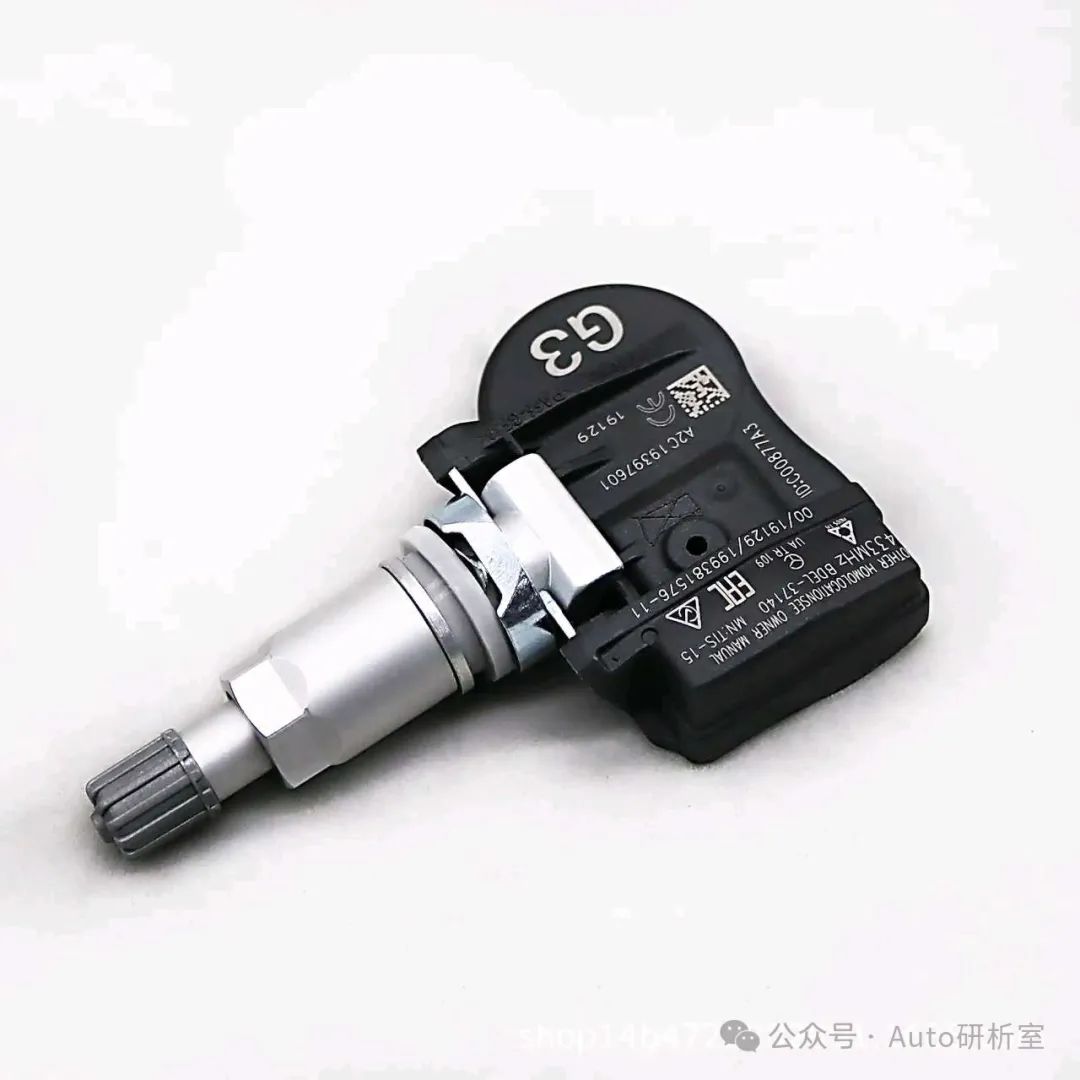
✍Classification
Automotive tire pressure sensors can typically be classified in the following ways:
🌲Classification by installation method:
External tire pressure sensors: Installed on the tire valve, secured by tightening a nut, making installation and removal relatively easy, but they are susceptible to external impacts and harsh environmental conditions, and there may be a risk of detachment at high speeds.
Internal tire pressure sensors: Installed inside the tire, close to the rim, requiring specialized tools for installation, offering better protection and stability, not directly affected by external environments, and generally have a longer service life.
🌲Classification by signal transmission method:
Active tire pressure sensors: Actively send tire pressure and temperature data to the vehicle’s receiving module at regular intervals, continuously monitoring and transmitting information regardless of whether the vehicle is in motion, allowing the driver to be informed of tire conditions at all times.
Passive tire pressure sensors: Do not actively send signals but instead calculate tire pressure changes using pulse signals generated during tire rotation, utilizing data from the ABS system’s wheel speed sensors. This method is cost-effective but only works when the vehicle is in motion and has relatively lower monitoring accuracy.
🌲Classification by power supply method:
Battery-powered tire pressure sensors: Use button batteries to provide power to the sensors, offering strong independence and can provide stable power for the sensor components over a long period, but the batteries need to be replaced once depleted.
Wireless charging tire pressure sensors: Use electromagnetic induction devices near the vehicle’s wheel hub for wireless charging, eliminating the need for battery replacement, solving the limited battery life issue of battery-powered sensors, and offering higher convenience and environmental friendliness.
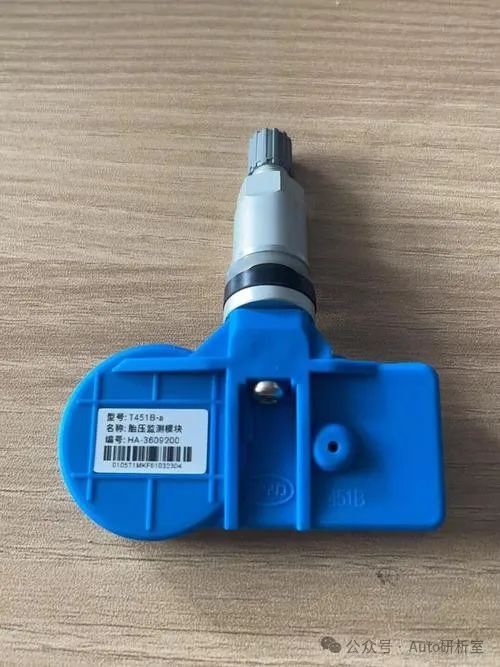
✍Advantages and Disadvantages
The following are the advantages and disadvantages of automotive tire pressure sensors:
🌲Advantages
Improved driving safety: Can monitor tire pressure and temperature in real-time, promptly detecting abnormal tire pressure, such as under-inflation or over-inflation, alerting the driver to take action and avoiding traffic accidents caused by tire issues.
Extended tire lifespan: Maintaining proper tire pressure is key to normal tire wear. Tire pressure sensors can help drivers keep tire pressure within standard ranges, reducing uneven wear and abnormal wear, thus extending tire lifespan.
Reduced fuel consumption: When tire pressure is insufficient, the contact area between the tire and the ground increases, leading to increased rolling resistance and higher fuel consumption. Tire pressure sensors can help drivers promptly identify and correct under-inflation issues, contributing to reduced fuel consumption and cost savings.
🌲Disadvantages
Higher cost: Whether internal or external tire pressure sensors, the purchase cost plus installation fees can increase the overall operating cost of the vehicle. This may be a consideration for some economy vehicles.
Requires regular maintenance: Battery-powered tire pressure sensors will gradually deplete battery power over time and need to be replaced regularly. For internal tire pressure sensors, battery replacement can be cumbersome, requiring specialized tools and personnel.
Possibility of false alarms: Although tire pressure sensor technology continues to advance, it may still be affected by electromagnetic interference, sensor malfunctions, etc., leading to false alarms, causing unnecessary inconvenience for drivers.
The above content is for reference only; the actual performance may vary among different brands and models of tire pressure sensors.
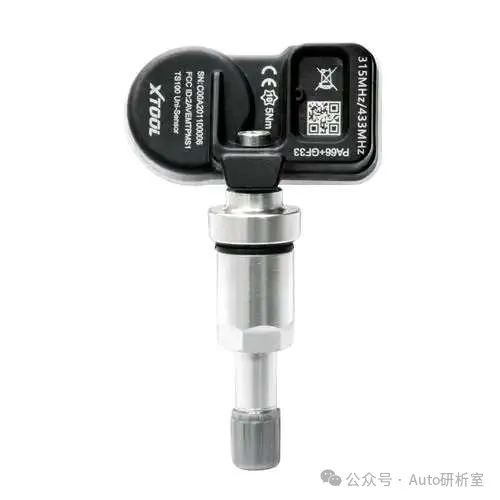
✍Development Process
The development process of automotive tire pressure sensors generally includes the following:
🌲Requirement analysis
Collect performance requirements for tire pressure sensors from automotive manufacturers, such as measurement accuracy, operating temperature range, etc.
Study the advantages and disadvantages of similar products on the market, analyzing user needs and usage scenarios.
🌲Scheme design
Determine the overall architecture of the sensor based on requirements, including selecting suitable pressure and temperature sensitive elements, microcontrollers, wireless RF modules, etc.
Design the circuit schematic and plan the layout of the printed circuit board to ensure circuit stability and anti-interference.
Determine the packaging form and materials, considering waterproof, dustproof, and impact resistance performance requirements.
🌲Sample production
Procure the necessary electronic components and raw materials, and assemble the components onto the printed circuit board using surface mount technology, completing the circuit assembly.
Package the assembled circuit board according to design requirements, installing antennas, batteries, and other components to create tire pressure sensor samples.
🌲Testing and optimization
Use specialized testing equipment to conduct comprehensive tests on the samples, including pressure and temperature measurement accuracy tests, wireless signal transmission distance and stability tests, etc.
Analyze issues based on test results and optimize circuit parameters, software algorithms, etc., until the sample performance meets design requirements.
🌲Reliability testing
Conduct reliability tests on the optimized samples, such as high temperature, low temperature, humidity, vibration, and shock tests, simulating various harsh environments the sensor may encounter during actual vehicle use.
Observe the performance of the samples during reliability testing, evaluate their lifespan and stability, and make improvements based on any issues encountered.
🌲Mass production preparation
Develop mass production process documents, including production processes, process parameters, quality control standards, etc.
Prepare production equipment and tooling, establish a procurement system for raw materials and components to ensure smooth mass production.
The above outlines the general development process for automotive tire pressure sensors, which may vary among different companies based on actual circumstances.
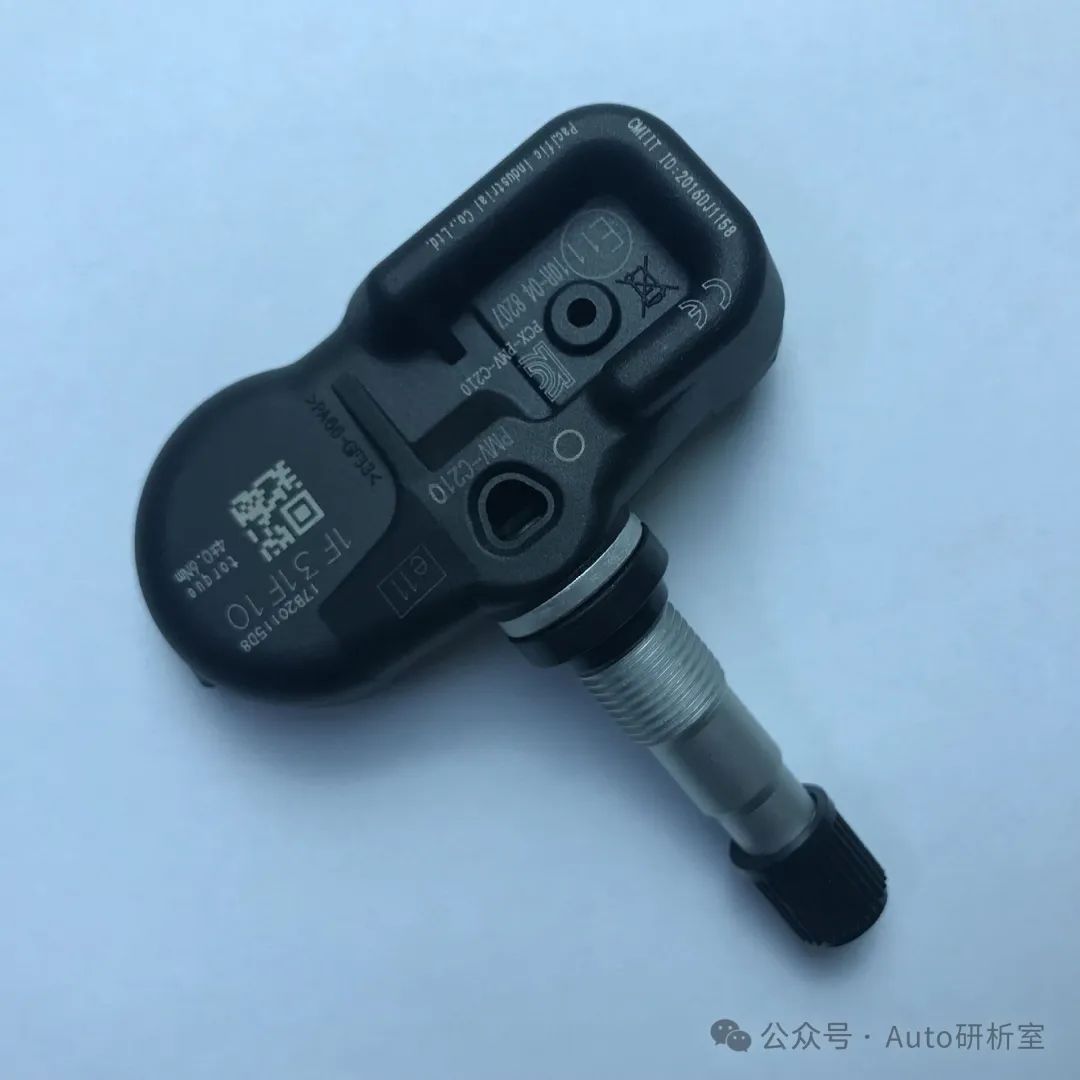
✍Cost
The cost structure of automotive tire pressure sensors mainly includes the following aspects:
Component costs: Includes pressure and temperature sensitive chips, microcontrollers, wireless RF modules, antennas, batteries, printed circuit boards, etc., with the cost of chips and RF modules accounting for a significant portion, approximately 40%-60% of the total component cost.
Packaging costs: Involves packaging materials such as engineering plastics, silicone rubber, epoxy resin, etc., as well as packaging process costs, such as injection molding and potting, accounting for approximately 15%-25% of the total cost.
Manufacturing and assembly costs: Includes depreciation of equipment on the production line, labor costs, energy consumption, and costs associated with assembling and testing components, generally accounting for 10%-20% of the total cost.
R&D costs: Expenses incurred by companies for developing tire pressure sensors, such as salaries for R&D personnel, purchase of R&D equipment, testing expenses, etc., allocated to each product, accounting for approximately 5%-10% of the total cost.
After-sales costs: Expenses for product after-sales maintenance, replacement, technical support, etc., including salaries for after-sales personnel, costs of spare parts, etc., accounting for approximately 5%-10% of the total cost.
Other costs: Such as packaging material costs, transportation fees, storage fees, and management and sales expenses incurred during the operation of the company, allocated to the product, accounting for approximately 5%-15% of the total cost.
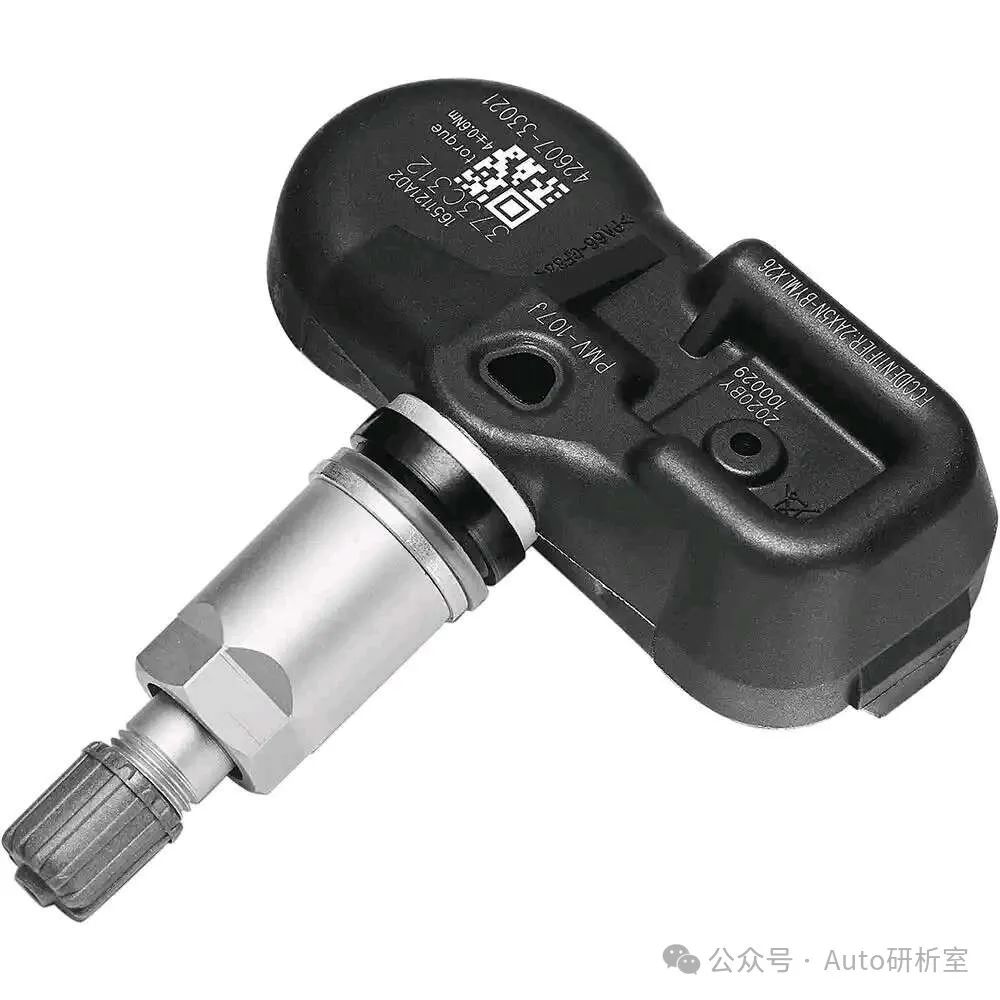
✍Suppliers
Here are some quality suppliers of automotive tire pressure sensors:
1. Baolong Technology: A representative of Chinese suppliers, began laying out TPMS business in 2002, with TPMS business revenue reaching 1.911 billion yuan in 2023, ranking second globally. Products include programmable sensors, dedicated sensors for specific vehicles, etc., with clients including Daimler, BMW, Volkswagen, etc.
2. Schrader: Based in the UK, a leading manufacturer of tire pressure monitoring systems with a rich history, known for quality and professionalism, widely adopted by many European and American vehicle models.
3. Continental AG: Has rich experience and innovative technology in the tire pressure monitoring field, with precise and reliable products, a well-known company in the automotive parts industry, providing high-quality tire pressure sensor products to automotive manufacturers.
4. Orange: A Taiwanese brand, one of the few international manufacturers to obtain multiple wireless tire pressure certifications, providing products for various brand models and being one of the few manufacturers able to provide compatible original factory tire pressure monitoring sensors in the North American market.
5. Weilitong: A brand under the Hong Kong Weitong Technology Group’s Zhongshan Weilitong Electronics Technology Co., Ltd., using advanced SMT production technology, with good product stability and timely and accurate alarms, performing well in the domestic market and favored by consumers.
6. Tire King: Headquartered in Zhongshan, Guangdong Province, the “Tire King” series products hold a considerable market share domestically and are also exported to the US, Europe, Southeast Asia, etc., with comprehensive protection for vehicles and corrosion-resistant materials.
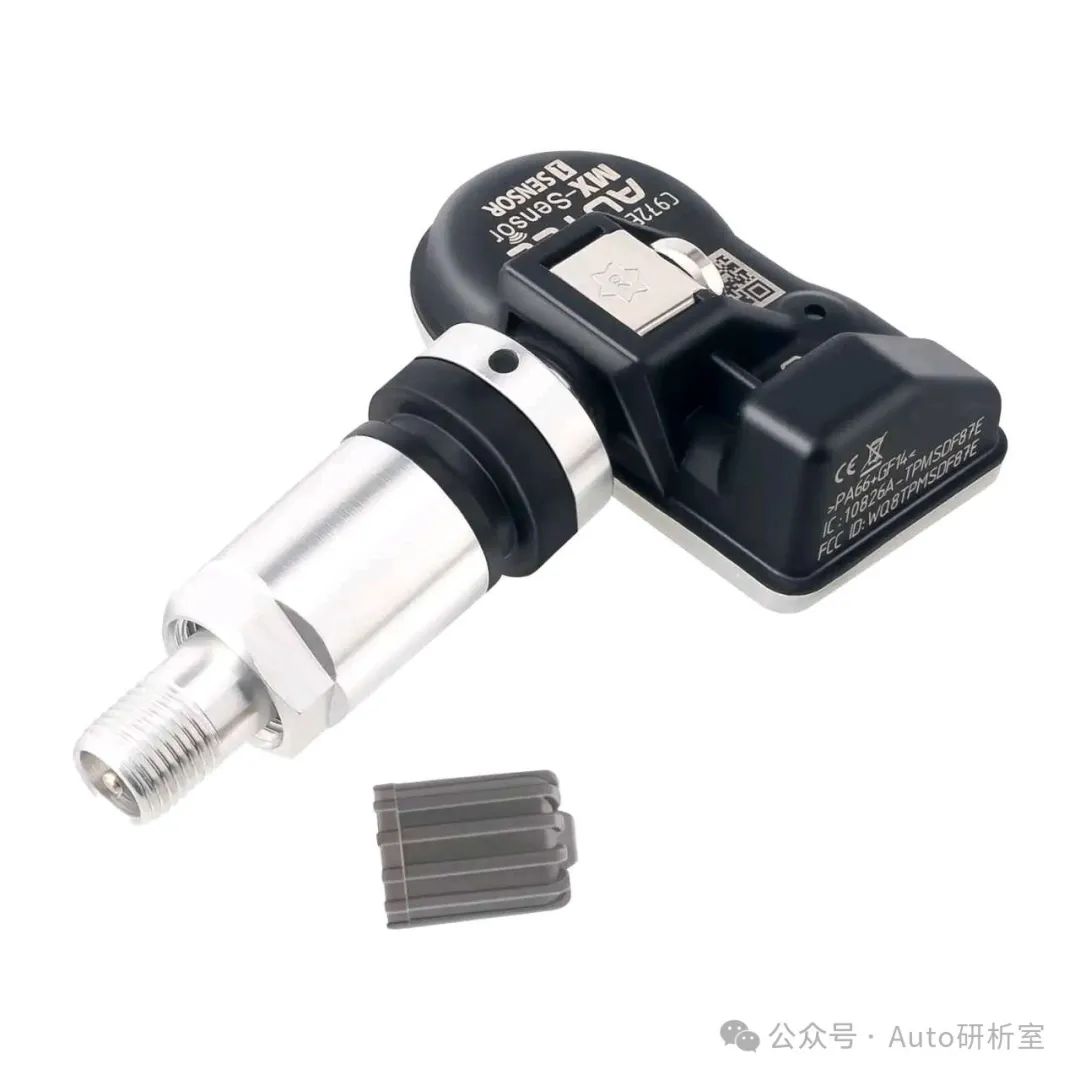
✍Development Trends
The future development trends of automotive tire pressure sensors are as follows:
High integration: Currently, tire pressure sensors have integrated multiple sensors for pressure, temperature, etc. In the future, they will further integrate RF transmission chips, microcontrollers, etc., forming highly integrated single-chip solutions, reducing size and cost while improving reliability.
Wireless and passive: To address the limited battery life and inconvenience of replacement, wireless passive technology will become a development direction. By receiving external RF energy for power, tire pressure and temperature information can be wirelessly transmitted, reducing maintenance costs and improving system stability.
Intelligent and connected: Future tire pressure sensors will have stronger data analysis capabilities, not only monitoring tire pressure and temperature but also integrating vehicle operating conditions, road conditions, etc., to provide drivers with a comprehensive tire health assessment and safety warnings. Additionally, they can be deeply integrated with vehicle networking systems for data sharing, supporting intelligent driving.
High precision and reliability: As users place more emphasis on driving safety, tire pressure sensors will continuously improve measurement accuracy and reliability, reducing false alarms and missed reports. They will maintain stable performance even in harsh environments, such as high temperatures, low temperatures, and high humidity, providing drivers with accurate tire information.
Cost reduction: With increasing market competition and technological maturity, tire pressure sensors will move towards lower costs. On one hand, production costs will be reduced by increasing chip integration and optimizing production processes; on the other hand, the rise of domestic chip manufacturers will break the monopoly of foreign manufacturers, further lowering product prices and increasing the market penetration of tire pressure sensors.
🌎 To learn more about automotive knowledge, please scan the QR code below to join the knowledge community 【Auto Research Room】.